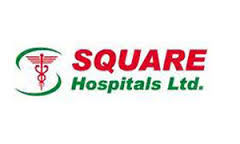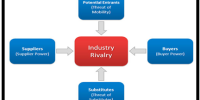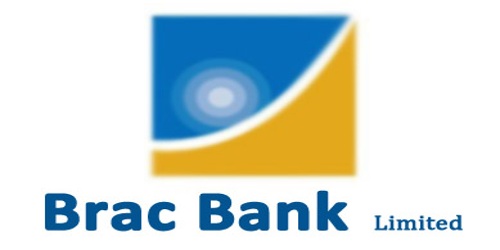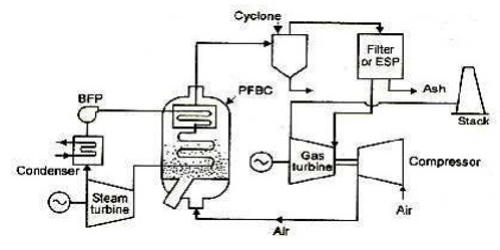Employee turn over is the ratio of the number of workers that had to be replaced in a given time period to the average number of workers
Manpower is instrumental for the service industry and that manpower shortage would be the biggest challenge to tourism and hospitality industry compounded by the issue of staff retention and job satisfaction. In an increasingly competitive landscape, the hospitality industry shall face with restructuring especially in aspects of career progression opportunities and matching industry growth with the talent and service levels as well as monetary and non-monetary reward structures. There is a necessity then to look at the context of labor turnover within the hospitality industry and arrive at benchmark practices on combating the operational and administrative challenges the high levels of turnover posed. The paper is proposed to analyze and evaluate the impact of Nurses turnover in Square hospitality limited. The information that this research could provide will enable to promote strategies that will minimize the high rates of turnover while optimizing the levels of staff retention by means of enhancing recruitment, job satisfaction, productivity, organizational commitment, excellence and quality service.
Reasons that we have chosen this topic are:
- All over the world the high turn over rate of the nurses is burning issue.
- The success of health-care business is greatly depends on Nursing care.
Company background
SQUARE GROUP
“Square”- an organization with equal emphasis on leadership, technology, quality and passion. “Square” today is more than just an organization, it is an institute. “Square” is one of the biggest group of industries in Bangladesh. There is an interesting story of naming the company “Square”. Under the leadership of Samson H. Chowdhary “Square” started out as a small scale pharmaceuticals venture in 1958. There were four partners and they thought of naming the company “Square” and they signify it “perfect” as a meaning. Set up in 1958, Square pharmaceuticals Ltd, the flagship company lies at the core and is the market leader in pharmaceutical industry since 1985.
In a carrier spanning across five decades, it has pioneered the development of the local business in fields as diverse a pharmaceuticals, toiletries, garments, textile, information technology, health care products, food products, hospital etc. with annual turnover of around USD 300 million and with a workforce of around 15000. The SQUARE GROUP today is a true icon in the Bangladesh business sector. Square group comprises of more than 10 sister organization.
The vision of SQUARE
The vision of SQUARE, “we stand for ceaseless efforts. We never stand still, slow down, stop thinking, compromise with quality. We believe in using state of the art technology to cope with the ever chaining world. We believe in innovation and diversification”.
SQUARE HOSPITAL LIMITED
SQUARE Hospitals Ltd is a concern of square group. It is a 300 bed tertiary care hospital. The hospital is an associate partner of Methodist Healthcare, Memphis, Tennessee, USA, Christian Medical College-vellore, India, and care IVF centre, Singapore.
Square hospital is incorporated in 2001 and starts its journey in 2006 for Bangladesh and the people of south and south East Asia for quality health care, as well as an integrated centre for clinical services, medical and nursing education and research.
The hospital is located in the heart of Dhaka and aims to serve a greater portion of the capital city. At present it consists of two buildings on either side of Panthapath connected by an over-bridge. The main hospital building is 18 storied tall and about 450000 sq. ft. The second building is located across the street and is 16 storied with 136000 sq. ft. Both are constructed in accordance with the US fire and building safety standards.
Square hospital aims to provide unparallel service to the people of Bangladesh by delivering the highest possible level of care. For this, huge investment has been made on equipment and technology. It has successfully recruited consultants from USA, UK and quality hospitals in the Middle East. About half a dozen phycians are coming from CMC, vellore. Bangladeshi physicians with good reputation are also part of the medical team. Huge emphasis has been made on quality nursing services. For this it has trained over a hundred nurses for more than a year. Here medical services will be provided as both outpatient and inpatient services; it has also an Ambulance service. Dental services are also incorporated within the medical services.
To provide the utmost health care facilities to the people square hospital has a large number of employees of about 1500. To perform the medical care to the people the hospital has so many services. They are as follows:
Ancillary services
Square hospital has rich ancillary services. It consists of many services. They are:
- Pathology and Laboratory: square hospital has one of the most modern laboratories in the country. The laboratory is equipped with excellent analyzers. It has included automated tissue processor, automated strainers, gel cards for blood bank, component preparation.
- Radiology and imaging: In addition to all standard modern radiology equipment, square offers two CT scanners. Square hospital is capable of performing quality CT Angiograms. To meet the requirement of the patient it has portable X rays, ECHO and USG. Not only these Images can be sent anywhere in the world for second opinion. More over patients may obtain images in CDS.
- Physiotherapy: The hospital has a well equipped physiotherapy centre along with all kinds of modern equipment facilities.
- Health information management
- Central sterilization service department and
- Patient nutrition services.
Medical services
Square hospital likes to give unique services to the people of Bangladesh by discharging highest medical services. It comprises with OPD and IPD services.
OPD services
It can serve 1200 patient per day. It has 60 well equipped medical consultation and examination rooms and many foreign trained medical and nursing specialists.
IPD services
It has 300 beds with modern and semi private rooms and 24 hour nurse call and monitoring system. It also includes ICU, CCU, NICU, PICU, CSICU and SICU.
Nursing Services
Square hospital has established a organize nurses department. To give the patient better services, it has trained up the nurses from CMC, vellore. The numbers of nurses are about 700.
Human Resources
SquareHospital has rich human resources. All kinds of recruitment are made by HR department. Not only that this department has conducted the training program of the employees especially nurses. They also conducted the orientation course.
Besides these services have also other services like:
- Accounting & financial services: It includes accounting & financial services and patient financial services.
- Engineering services: It consists of biomedical engineering, engineering and interior design.
- Facilititv management support services: It consists of communication, customer service, food &beverage, house keeping & laundry, management support, security & security and transport.
- Marketing & business development: The hospital is very much aware of its marketing and business development section. It makes all out effort to develop the section.
- ICT services: The ICT section of the hospital is very rich. All the hospital services are carried out with the support of this system, especially to meet the requirement of the stuff and patient.
- Supply chain management: It includes commercial, general store, and medical supply unit and pharmacy distribution.
- Square hospital has other service support facilities such as:
- Professional USA standard housekeeping and cleaning services.
- 24 hours pharmacy services
- Convenient and secured car parking garage
- Full service cafeteria and snacks cafe.
- Cyber corner- computer info access
- Flower, fruits, and gift shop.
- USA standard safety and security system
- Prayer rooms.
Various social activities of SQUARE
Square Group has a social commitment. As a part of this commitment it has felt to improve the society. So they have taken different social activities beyond business. They took part in the welfare program of acid burn victims. It has sponsored “Meril Prothom Alo” award festival. It is also a major sponsor of sporting events in the country.
In fact SQUARE looks at the future with increasing confidence. In future SQUARE wishes not only to strengthen its strong local position but also extend its international prence. Square likes to repeat its local success on the global scene.
Problem statement
It is very essential for any organization to make the work productive and to assist the workers to achieve its goal. Motivation or to make someone to work is no doubt a very critical work. It depends on how one can know others liking and at the same time his want. So to find out the perception of the employees of SquareHospital on Herzberg’s two factor theory of motivation is not an easy task. To perform the study it is tried whole heartly to know the where about of the employees of SquareHospital through questionnaire on the job factors. Their answer scripts are used to find out their opinion on Herzberg’s motivational factors and hygiene factors i.e what they preferred and less preferred. Finally, the study has made some recommendation for the SquareHospital authority to follow them. So that they are able to motivate their workforce to work sincerely.
Purpose of the Study
The purpose of this research is to identify factors that contribute to the high turnover rates among nurses working in Square hospitals limited in order to address these factors and reduce the turnover rates.
Objective of the Study:
The Study aims to identify nurses
- Level of job satisfaction
- Intension to leave the organization
- Factors influencing turnover Recommendation to reduce turnover
Research Design:
This study used a quantitative exploratory descriptive design to identify and describe factors that influence nursing turnover in Square Hospital ltd.
Research Methodology:
Quantitative research was used to investigate factors influencing nursing turnover because the study focused on specific questions that needed to be answered. These factors were described but no relationships were specified
Target Population
All professional nurses employed by all the Square Hospital Ltd. during 2010 comprised the population of this study. As the population would be too large to study for a master’s dissertation of limited scope, and as these expenses would be prohibitive, the sample of participating hospitals was randomly selected from the population of hospitals and all professional nurses at each participating hospital were invited to complete questionnaires.
Sample Design:
The sample was on random sampling basis. The sample size will be 50 under four categories:
- Nurse supervisor -03
- Nurse Manager: 05
- Charge Nurse: 10
- Staff Nurse: 32
Simple random sampling was used to select hospitals participating in the study. Every hospital in the population had an equal chance of being selected and therefore would be accepted as being representative of the population of this private group of hospitals in Bangladesh. All professional nurses at the participating hospitals were requested to complete questionnaires, obviating the need to select samples of professional nurses.
Hypothesize
Hypothesize as follows:
H1.Demographic factors are associated with turnover intension specially
H1a. Age is negatively associated with turnover intension
H1b. Male or female have greater intension to leave the job
H1c. Tenure of an employee is associated with his or her intension to leave.
H2. Job satisfaction is negatively associated with turnover intension, specially
H2a. Satisfaction with pay in negatively associated with turnover intension.
H2b. Satisfaction with the nature of work in negatively associated with turnover intension.
H2c. Satisfaction with supervision is negatively associated with turnover intension.
Implementation
Data Collection instrument & its Development:
Both Primary and Secondary data will be used for this research.
Primary Data: Questionnaire, Interview
Secondary Data: Annual HR Report, Exit interview, News paper, Journal
With a view to conduct the said study it was very essential to collect the necessary data. The required data was collected from both primary and secondary sources. The primary data was collected by delivering the questionnaires among the personnel of 9 departments of SquareHospital. The secondary data was collected from the booklets of Square Hospital Limited, other text books and from internet browsing.
According to Polit and Hungler data collection is the gathering of pieces of information that are necessary for the research process. A structured approach to collecting data was utilized. Questionnaires were used to obtain data relevant to the study in order to answer the research questions. The purpose of the study was to identify factors that influence turnover among professional nurses in a group of private hospitals in Bangladesh. Every professional nurse who was employed at the selected Square hospitals at the time of the data collection, received a questionnaire. These questionnaires were distributed through the matron of each hospital. Each questionnaire was issued with a stamped envelope with the researcher’s address, and a pen. No consent form was included (to ensure the anonymity of each participant) but completion of the questionnaire implied consent. An accompanying letter explained that participation remained voluntary. All data would be treated in a confidential and anonymous manner. Data analysis commenced when the data collection had been completed.
Data-collection instrument
A data collection instrument is the device used to collect data in an objective and systematic manner for the purpose of the research. Data collection instruments can be questionnaires, interview schedules, tests and available records.
According to Dempsey and Dempsey a questionnaire is a paper and pencil data collection instrument filled in by respondents for the purpose of the research study. In this study the questionnaire was designed to collect data about factors influencing turnover among nurses in a private group hospitals in Bangladesh.
Characteristics of a questionnaire
The characteristics of a questionnaire:
- Questionnaires are less expensive than conducting interviews. A lot of people can be reached within a short space of time. Compared to conducting interviews, questionnaires imply reduced travel and/or telephone costs. Questionnaires are more feasible to be used by researchers who have full time jobs, than conducting interviews.
- Questionnaires provide an easy way to get a lot of information within a limited period of time.
- Respondents can complete the questionnaires at their own time without pressure for the immediate responses.
- Data analysis to closed ended questions is straightforward, provided the questionnaire had been preplanned to meet the requirements of a specific computer program. Planning in advance for the analysis is possible.
- Anonymity can be guaranteed, reassuring the respondents that no one will know what any specific individual respondent’s answers were. This aspect based on the total sample and not only on those who answered the question and therefore the percentages will not add up to 100 percent.
Survey Instruments
To perform the study successfully different data were needed. So a framed questionnaire was distributed among the personnel of SquareHospital. The questionnaire was consists of 16 questions. Additional 5 comments are also included at the end of the questionnaire. In the
questionnaire the respondents were asked to rank the questions by writing 1,2,3…..16 where means factors that motivated them most and 16 means the factors that motivated least. A sample of the questionnaire was attached.
A study is conducted to know the employees’ perception on Herzberg’s two factors theory of motivation that is practiced in Square Hospital Limited in Bangladesh. Motives of SquareHospital employees have been tested to learn what SquareHospital employees want from their work. The hospital employees were asked through questionnaires to rank Herzberg’s 16 job factors where 1 means factors that motivated them most and 16 means the factor that motivated least.
Outline of the Respondents
We distributed the questionnaire among the employees of 9 departments of about 1200 employees. The departments are Accounting & Financial Services, Ancillary Services, Engineering Services, Facility Management Support Services, Human Resources, ICT Services, Marketing & Business Development, Nursing Services and Supply Chain Management. We issued 15 questionnaires to each department. We received completed sample of 100 employees out of 135 employees.
After receiving the completed questionnaires sample we tabulated the findings of sample in table-4.1. Then we calculate the result into Mean, Median, Mode and Standard Deviation. Finally, we rank the job factors depending on the mean of the result.
Nurse Working Time Schedule:-
Employee | Working hour |
| Nursing Manpower | 762 |
| Total Nurse | 564 (Register) |
| Nurse’s Working hour | 8 hour (3 Shift) |
| Nurse’s Lunch Time | 1 hour |
| Start of Work | 8.00 am |
Perceived workloads and work schedules which could Influence nurses’ turnover rates
| CAUSES | FREQUENCY | PERCENTAGE (%) |
| Transport problems | 1 | 1.17 |
| Nursing shortage | 3 | 3.52 |
| Childcare | 2 | 2.35 |
| Unfair allocation of duties | 2 | 2.35 |
| Insufficient supervision | 1 | 1.17 |
| Disorganized management | 1 | 1.17 |
Work schedule and workload problems contributing to turnover
Only one respondent indicated that transport problems could contribute to turnover. Nurses using unreliable transport often arrive late at work and usually do not know whether transport will be available the next day. This could leave the other nurses on duty to have to cope with the workload in order to compensate for those arriving late for work or leaving before the scheduled time. However, this issue seemed to be a minor concern among the respondents, probably because effective public transport systems are available in the Bangladesh.
Insufficient supervision and disorganized management was also considered as a problem that could lead to turnover in relation to work schedules and workloads. If work is not delegated properly due to insufficient supervision, this could lead to increased workloads. Three respondents indicated that nursing shortages could contribute to workload problems leading to increased turnover rates among nurses. The nursing shortages, absenteeism and performance of non-nursing duties such as providing water and tea, increased their workloads.
Only two respondents indicated that childcare problems could affect turnover rates among nurses.
Table:: Factors influencing nurse turnover rates attributable to their immediate supervisors
| Factor influencing nurse turnover rates | frequency | percentage |
| Lack of confidentiality | 1 | 1.17 |
| Lack of interpersonal skills | 1 | 1.17 |
| “Two faced” (being distrustful) | 1 | 1.17 |
| Excellent role model | 2 | 2.35 |
The factors indicated by respondents were lack of confidentiality, lack of interpersonal skills, being excellent rote models and being “two faced” (distrustful). Poor supervision could arise within the workplace when the supervisor is insensitive and/or incompetent and this could lead to job dissatisfaction. The number of respondents (see Table 2.12-) who mentioned factors influencing turnover rates that are related to their immediate supervisors are insignificant
Table: Current nurse category (n=85)
| Nurse Category | n | Cumulative frequency | % | Cumulative% |
| Staff nurse | 45 | 45 | 52,94 | 52.94 |
| Senior staff nurse | 15 | 60 | 17.65 | 70.59 |
| Junior sister | 3 | 63 | 3.53 | 74.12 |
| Senior sister | 19 | 82 | 22.35 | 96.47 |
| Other | 3 | 85 | 3.53 | 100 |
| Total | 85 | 100 |
The figures portrayed in table 4.3.Syndicate that 70.59% of the respondents occupied staff nurse and senior staff nurse positions. This large percentage of respondents clustered at the lower end of the nursing hierarchy could also explain why the minority TK (13.25%) of the respondents earned Tk. 8,000 or more per month.
- Registered nurses’ attitudes regarding turnover influence their performance at work
- Registered nurses’ levels of job satisfaction influence turnover
- Registered nurses in the Square hospitals have good working conditions.
- Herzberg’s Theory of Motivation can be used to contextualize the results of this study
In relation to the assumptions underlying the study, the major conclusions can be rephrased to state that registered nurses’ level of job satisfaction influence their attitudes towards turnover.
Based on the conclusions, the following recommendations could begin to address some of the factors that contribute to RNs’ turnover rates in the Square hospitals.
- Duplication of the same study in other private hospitals in the Square should be done to obtain comparative .data about the turnover rates of nurses in the SquareHospital.
- Further research should be conducted using in-depth interviews to further explore intrinsic and extrinsic factors’ influences on nurses’ turnover intentions. There might be other factors influencing turnover to RNs that remained unidentified in this quantitative exploratory survey.
- Work schedules should be as flexible as possible and minimal changes (with consultation of all concerned) should be done in order to avoid disrupting nurses’ social lives.
- Workloads should be manageable by adequately staffing units and by appropriate delegation of duties.
- An organization should have a monthly or quarterly newspaper and publish the achievements of employees, promotions and recognition of any outstanding performance.
- During performance appraisals, supervisors should address issues like, promotions, salaries, advancement opportunities, recognition, responsibility and achievements in order to prevent feelings of being in dead-end jobs influencing nurses’ intentions to leave a specific organization..
- Group cohesion should be enhanced by social gatherings away from the work environments.
Nursing services
Nursing services is the main nerve of the hospital. Here the nurses played a vital rote i the hospital services. So their assessment is very important. Their assessment results are
shown in the table.
| Factors | Mean | Rank |
| Work condition | 4.625 | 1 |
| Status | 6.1875 | 2 |
| Policy & administration | 6.5625 | 3 |
| Responsibility | 6.75 | 4 |
| Relationship with peers | 7.0625 | 5 |
| Work itself | 7.125 | 6 |
| Recognition | 8 | 7 |
| Relationship with subordinates | 8.75 | 8 |
| Security | 8.8125 | 9 |
| Advancement | 9.0625 | 10 |
| Supervision | 9.5625 | 11 |
| Salary | 9.9375 | 12 |
| Relationship with supervisor | 10.3125 | 13 |
| Growth | 10.625 | 14 |
| Achievement | 11.75 | 15 |
| Personal life | 12.75 | 16 |
Ranking of Nursing services
The table indicates the nurses opinion. Here the nurses preferred work condition, job status and company policy & administration most. So the management should create a fair atmosphere in the hospital. This will help the nurses to work more sincerely. The nurses also ranked personal life, achievement, growth and salary as less motivator. These findings are shown in the graph.
Engineering services
These are the technical services of the hospital. So the nature of job is quite different from other department. So the views of this department varied to others. The views of the engineering services are shown in the table:
| Factors | Mean | Rank |
| Responsibility | 1.666667 | 1 |
| Work itself | 1.666667 | 1 |
| Relationship with peers | 2.333333 | 2 |
| Relationship with supervisor | 2.833333 | 3 |
| Relationship with subordinates | 3 | 4 |
| Status | 6.333333 | 5 |
| Supervision | 6.666667 | 6 |
| Personal life | 7.166667 | 7 |
| Work condition | 8 | 8 |
| Growth | 10 | 9 |
| Security | 11 | 10 |
| Advancement | 12.5 | 11 |
| Recognition | 12.66667 | 12 |
| Policy & administration | 13 | 13 |
| Achievement | 13.16667 | 14 |
| Salary | 14.16667 | 15 |
Table: Ranking of Engineering services
Here the table showed the first 3 factors for engineering employees were responsibility, work itself and relationship with peers. The engineers also considered job status, supervision and work condition as significant which motivate them to work.
Recommendation
To establish his two factor theory Herzberg conducted several studies on several organizations. On conducting his survey he found that several job factors are prevailing among the employees which motivate them to work. Herzberg suggested to find out the demotivation factors of the employee and adopting necessary steps to make employee motivated from demotivation. To know what extent Herzberg two factor theory is consistent with the employees perception of Square Hospital Ltd we surveyed over the employees of SquareHospital through questionnaires. After analyzing the survey we found that the hospital employees have preferred relationship with peers, work condition and responsibility most. They also like relationship with supervisor, work itself. These findings sure help the hospital authority to take necessary steps for motivation its employees. In this regard I would like to mention some recommendations:
- To build up a interpersonal relationship among the employees, the management should hold discussion meeting. So that the employees will feel more comfortable to work. Moreover they can share their opinion among themselves.
- The management can make the job interesting by making it more challenging. A challenging work is always enjoyable and it makes the employees motivate to work. So job rotation and training courses are recommended.
- The management should give them freedom to work. It makes the employees think the work as his own which motivates to work more sincerely.
- The management should make sure the good physical surroundings of the job. To create a positive environment the management should make sure of availability of the working tools fit. There should not be too much or too little work. The doors of the management should keep open to all. A happy office is always a productive office.
- They should praise their employee’s work or idea. So that the employees would encourage to do their work.
- They should provide training programs for their employees to increase their skills. So that the employees will do their work correctly and efficiently.
- The management may provide some rewards or incentives like “Employee of the Month” reward on the basis of work. This will motivate the employees.
Conclusion
SquareHospital is a renowned modern hospital in Bangladesh. As a hospital the authority has a great social responsibility and commitment towards the nation. So the hospital authority tries to provide service to the people. To provide almost health care facilities to the people the hospital authority engaged a large number of workforces. As an organization of so many departments, it is very difficult task to motivate its workforce to work. For this they should know the factors that motivates them most. In this context herzberg mentioned motivation factors and hygiene factors that inspired the employees most to work sincerely. In his original study herzberg suggested to ensure the job factors in every organization. The study conducted in SquareHospital can play an important role in this regard. The major findings of this study represents that most of the employees of Square Hospital preferred relationship with peers, work condition, responsibility, relationship with subordinates, work itself, status, security, personal life, supervision etc. respectively. It is seen that among top 10 factors 8 factors representing hygiene factors which are relationship with peers, work condition, relationship with supervisors, relationship with subordinates, status, security, personal life and supervision. On the other hand 2 factors representing motivational factors which are responsibility and work itself. This result demonstrate that with some little differences, Herzberg’s hygiene factors applies to the hospital more significantly. Most of the employees felt more comfortable to these hygiene factors. Hence the management can feel proud of themselves for the services they rendered in the hospital. Moreover this result should be beneficial to the management to take necessary initiatives. These will help the hospital to fulfill the aspiration of the employees. However this study is tried its best to show the application of Herzberg theory on Square Hospital Ltd. Finally, it is hoped that this study can be used as a starting point for others to attempt the state of motivation in their organization.
















